Cucumber Profile
Written by Joy
Nov 04 2020
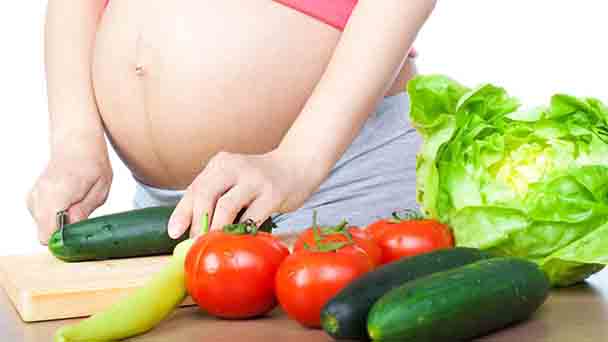
Cucumber is an annual trailing or climbing herb in the Cucurbitaceae family. The stems and branches are elongated, with furrows and white rough hairs. Its petiole is slightly rough and has rough, hard hair. The leaf blades are broadly ovoid and heart-shaped, membranous, with triangular lobes and teeth. Hermaphrodite. The male flowers grow in clusters in the leaf axils. The peduncle of the cucumber is slender and puberulent. The corolla is yellow-white, and the corolla lobes are oblong-lanceolate. The female flowers of cucumber are generally solitary or sparsely clustered. Its pedicel is thick and pilose. The fruit is oblong or cylindrical, yellow-green when ripe, with a rough surface. The cucumber seeds are small, narrowly ovoid, white, without edges, and the ends are nearly sharp and sharp. Flower and fruit period in summer.
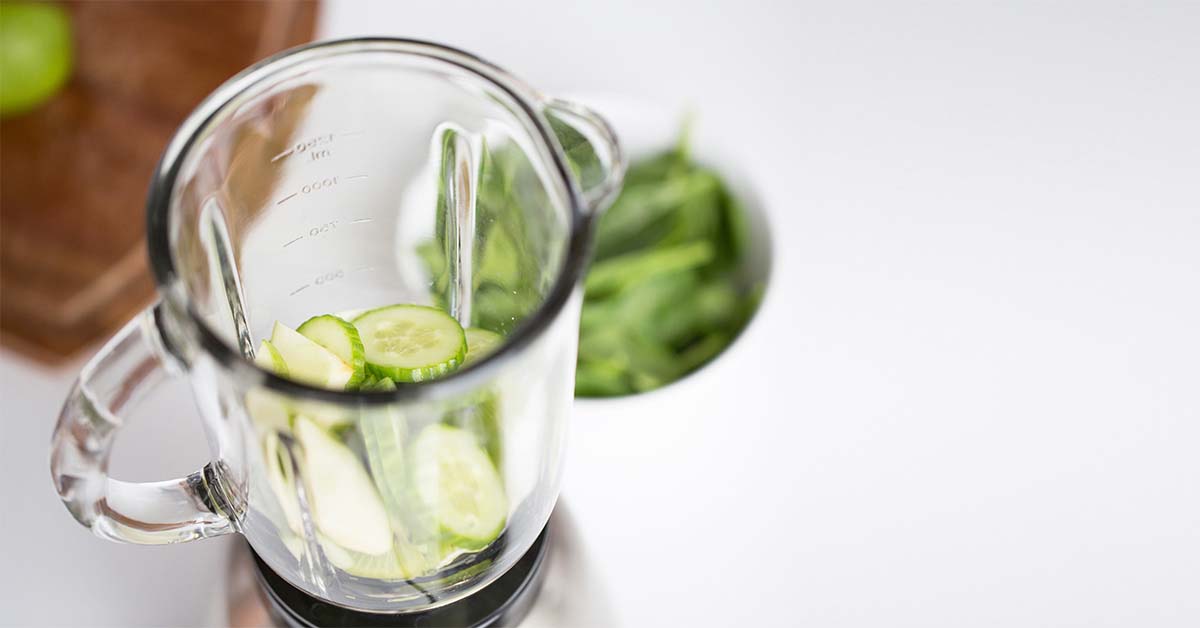
Cucumber morphological characteristics
Cucumber is an annual trailing or climbing herb. Its stems and branches are elongated, furrowed, and covered with white bristles. The tendrils are thin, not divided, with white pilose.Cucumber's petiole is slightly rough, with rough and hard hairs, 10-16 cm long; the leaves are wide oval heart-shaped, membranous, length and width are 7-20 cm, both sides are very rough, with rough hard hairs, 3 to 5 angles Or lobed, lobes triangular, toothed, sometimes marginal, sharp or acuminate at the apex. Cucumber’s base is curved and semicircular, 2 to 3 cm wide, 2 to 2.5 cm deep, and sometimes the base is leaned back.
Cucumbers are monoecious. Its male flowers grow in clusters in the leaf axils. The pedicel is slender, 0.5 to 1.5 cm long, and puberulent. The calyx tube of cucumber is narrowly bell-shaped or nearly cylindrical, 8-10 mm long, densely covered with white pilose, and the calyx lobes are subulate, open, and nearly as long as the calyx tube. The corolla of cucumber is yellow-white, about 2 cm long, and the corolla lobes are oblong-lanceolate, sharply pointed. Cucumber has three stamens, the filaments are nearly absent, the anthers are 3 to 4 mm long, and the drug septum is extended, about 1 mm long. Female flowers: solitary or sparsely clustered. Its pedicel is thick, pilose, and 1 to 2 cm long. The ovary is fusiform, rough, with small spines.
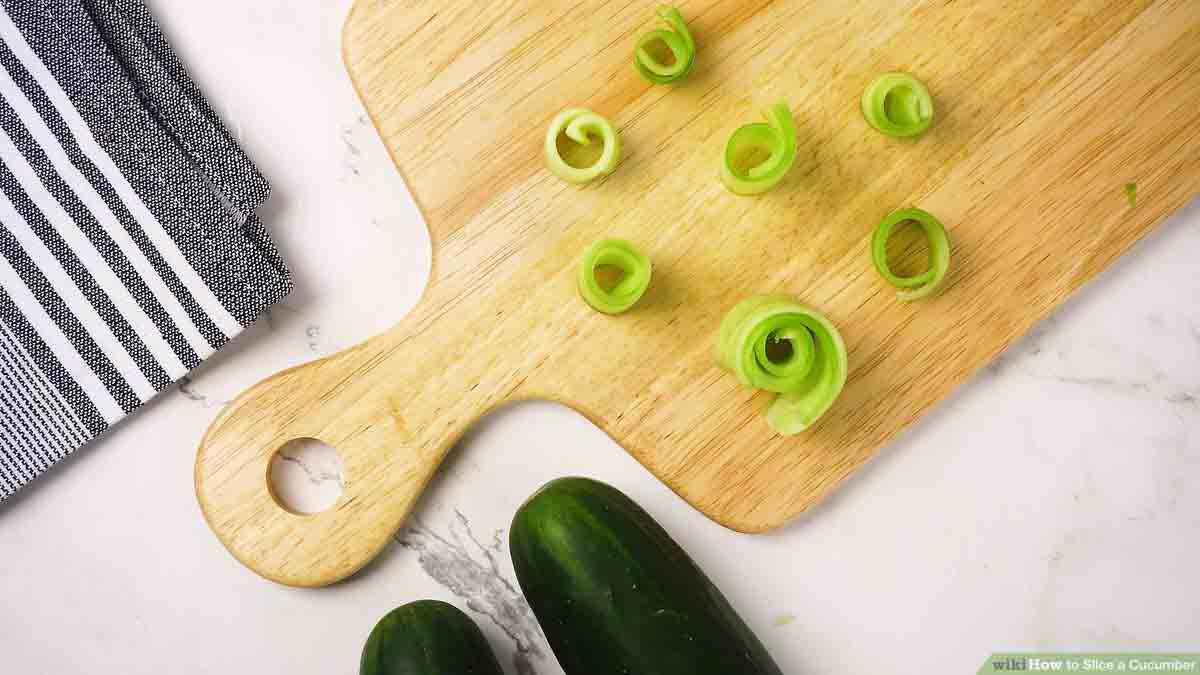
Cucumber growth habit and growing environment and distribution
Temperature
Cucumber loves warmth and is intolerant to cold. The optimum temperature for growth is 10~32℃. Generally, it grows best at 25~32℃ during the day and 15~18℃ at night. The most suitable ground temperature for cucumber is 20-25℃, and the lowest is about 15℃. The most suitable temperature difference between day and night is 10-15℃. Cucumber has poor photosynthesis at a high temperature of 35℃, high-temperature barriers appear at 45℃, and freezing to death at low temperatures of -2 to 0℃.Illumination
North China varieties do not have strict requirements on the length of sunlight and have become neutral plants with a light saturation point of 55,000 lux and a light compensation point of 1,500 lux. Most varieties grow well under short-day conditions of 8 to 11 hours.Moisture
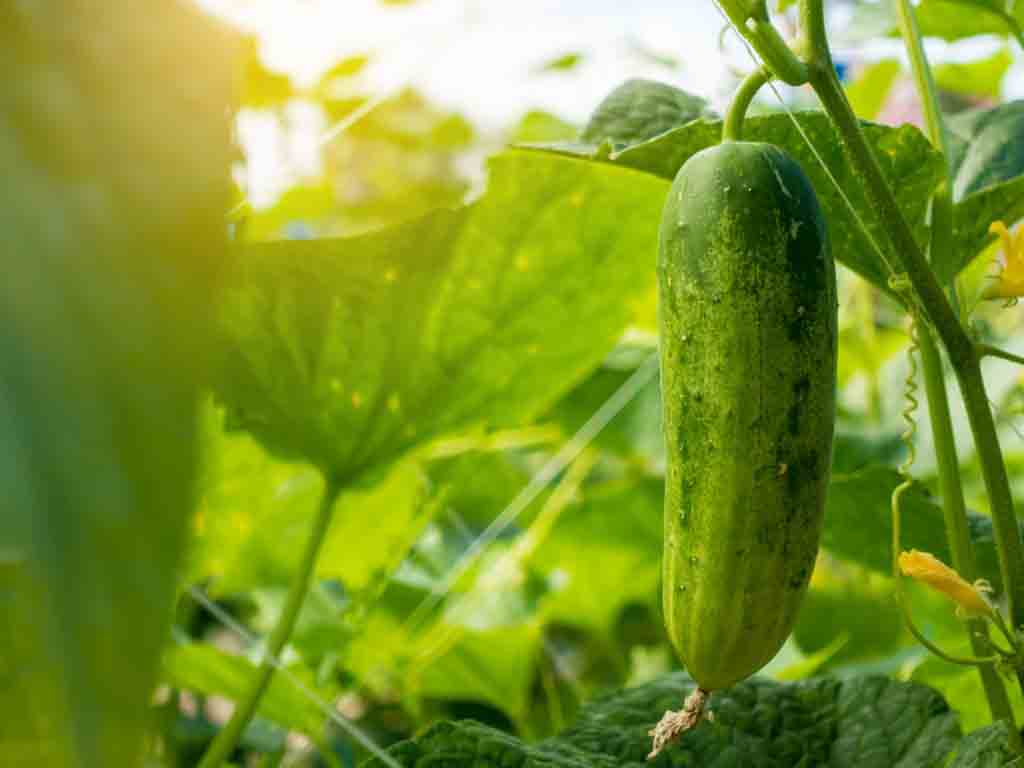
Soil
Cucumbers like dampness but not waterlogging, fertilizer but not a fertilizer, it is advisable to choose rich soil rich in organic matter. Generally, I like soil with a pH between 5.5 and 7.2, but the best pH is 6.5.Cucumbers are commonly cultivated throughout China. It is now widely planted in temperate and tropical regions.
Cucumber efficacy and role
The edible value of cucumber
Cucumber is sweet, has the effects of removing heat, diuresis, clearing heat and detoxification, and has the effect of weight loss.Cucumber peels are rich in nutrients and should be kept raw. However, in order to prevent pesticide residues from harming the human body, cucumbers should be soaked in saltwater for 15-20 minutes before being washed raw. When soaking cucumbers in saltwater, do not pinch their heads and remove the roots. Keep the cucumbers intact to avoid the loss of nutrients from the cut surface during the soaking process. In addition, cold dishes should be cooked and eaten now, and do not leave them for a long time after they are cooked, as this will also promote vitamin loss.
The nutritional value of cucumber
Cucumbers are rich in nutrients such as protein, carbohydrates, vitamin B2, vitamin C, vitamin E, carotene, niacin, calcium, phosphorus, and iron.effect
Smooth hair and bright nails: The silicon in cucumber can make hair smoother and nails brighter and stronger. The sulfur in cucumber also helps stimulate hair growth.
Beauty and skincare: Modern medical research shows that cucumber enzymes contained in fresh cucumbers can effectively promote the body's metabolism, expand skin capillaries, promote blood circulation, and enhance the skin's redox effect, so cucumbers have cosmetic effects. At the same time, cucumber is rich in vitamins, which can provide sufficient nutrients to the skin and effectively fight skin aging.

Detoxification and prevention of constipation: Cucumber contains fine cellulose, which can promote intestinal peristalsis and help the excretion of stool in the body. Nutrient-rich cucumbers are good for "cleaning up" the garbage in the body, and eating regularly helps prevent kidney stones.
Sober up alcohol and prevent poisoning: Cucumber contains a lot of B vitamins and electrolytes, which can replenish important nutrients, thereby reducing discomfort after drinking and alleviating hangovers. In addition, the alanine, arginine and glutamine contained in cucumbers have a certain adjuvant therapeutic effect on liver patients, especially patients with alcoholic liver cirrhosis, and can prevent alcoholism.
Vitamin supplement: Cucumber is rich in many vitamins, such as B vitamins and vitamin C. What needs to be reminded is that if the cucumber is eaten with the skin, a vitamin supplement is better.
Preventing diabetes, lowering lipids and stabilizing: A hormone in cucumber helps the pancreas to secrete insulin and can assist in the treatment of diabetes. The sterols in cucumber can lower cholesterol. Cucumber is rich in dietary fiber, potassium and magnesium, which is beneficial in regulating blood pressure and preventing high blood pressure.
Relieve arthritis and gout pain: The silicon in cucumber helps to strengthen the health of joint connective tissue. Cucumber and carrot juice can reduce uric acid and relieve arthritis and gout pain.
Cucumber cultivation
Cucumber seed reproduction
Seedbed preparationRootstock seedlings are cultivated with nutrient pots filled with nutrient soil. The ratio of nutrient soil is: 6 parts of fertile garden soil, 4 parts of decomposed horse manure, and 4 parts of manure. Each cubic meter of soil is added with decomposed dried manure or chicken manure 15 ~25 kg, 0.5 ~ 1 kg of superphosphate, 5 ~ 10 kg of plant ash, and then mix well. Scion seedlings are cultivated with nutrient soil in nursery trays (rootstock seedlings can also be cultivated in nursery trays when docking), the nutrient soil used is a half-mix of field soil and sandy soil, and 3 kg of nitrogen, phosphorus and potassium compound fertilizer per cubic meter of nutrient soil.
Sowing
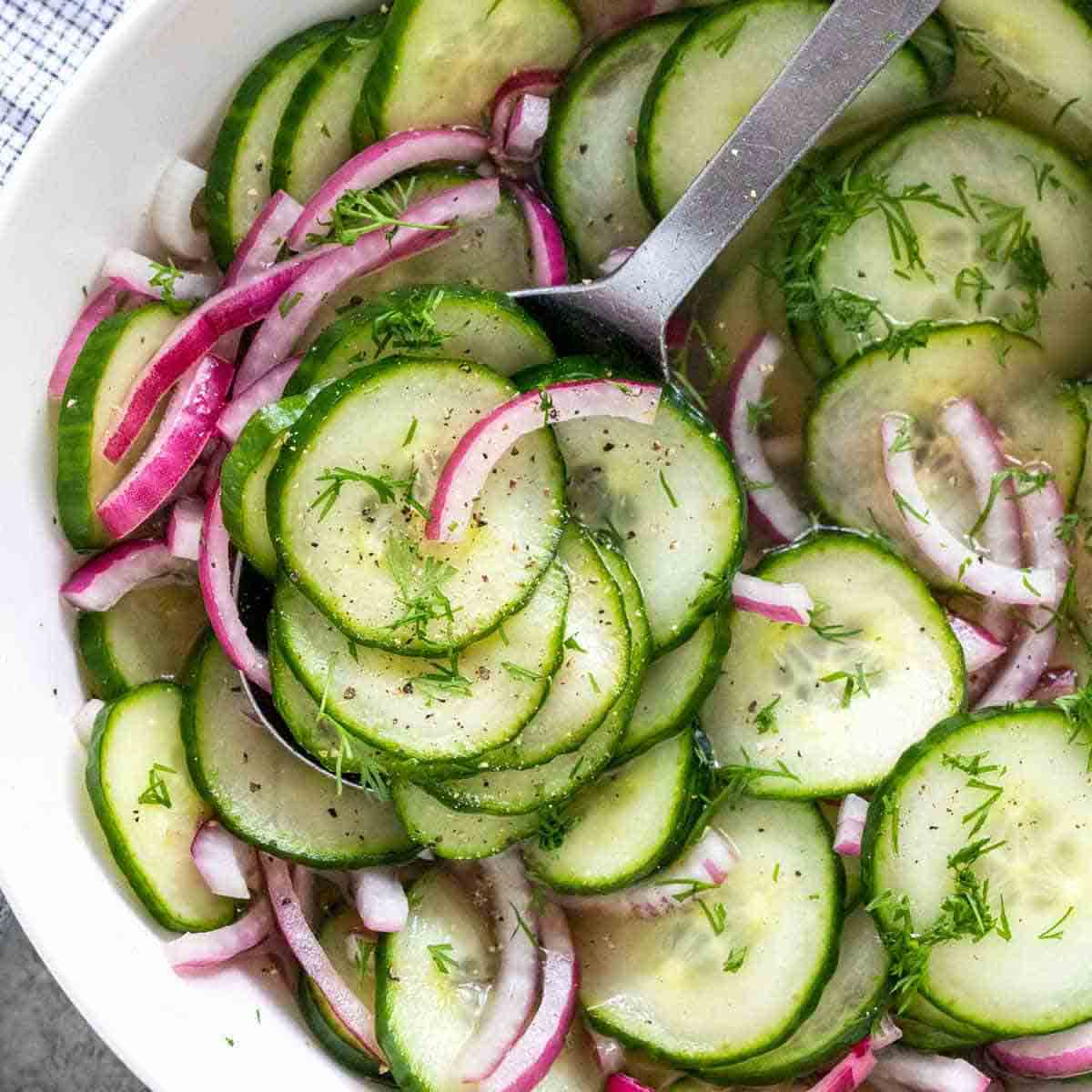
Pre-harvesting management: After accelerating germination, when more than 70% of the seeds are "white", they can be sown and covered with plastic film after sowing. Before the seedlings are unearthed, the bed temperature is maintained at 25-30℃ during the day, 16-20℃ at night, and the ground temperature 20-25℃. When the seedlings are unearthed, remove the mulch on the bed surface. Sprinkle 0.3 cm thick semi-dry fine soil on the bed after the seedlings emerge. After the seedlings are unearthed until the first true leaf is unfolded, the seedbed temperature during the day is 24-28℃, at night 15-17℃, and the ground temperature is 16-18℃.
Grafting
The cucumber grafting site should be warm and humid. The grafting methods are the docking method and the plugging method. Before grafting, sterilize bamboo sticks, blades and hands in 70% alcohol before grafting.Mating method
The cotyledons of cucumber seedlings are unfolded, and the first true leaf of the rootstock pumpkin seedlings reaches the size of a 5 cent coin. During operation, the thickness of the bamboo stick is 0.2-0.3 cm, and the tip is sharpened. Place the tip of the bamboo stick close to the inner side of the base of one cotyledon of the rootstock, and insert it diagonally below the other cotyledon, with an insertion depth of about 0.5 cm, without piercing the epidermis of the rootstock. Use a blade to insert the knife from about 0.5 cm under the cucumber cotyledon, and cut a knife on the opposite sides. The cut surface is 0.5 to 0.7 cm long and the cutting edge should be smooth. After the scion is cut, the bamboo stick is pulled out from the rootstock, and the scion is inserted into the scion. The depth of insertion is the level of the cut and the socket of the rootstock.
Docking method
The first true leaf of cucumber begins to unfold, and the cotyledon of rootstock pumpkin is fully unfolded to be suitable for grafting. Carefully dig out the rootstock seedlings and scion seedlings from the seedling tray first cut off the growth points between the two cotyledons of the pumpkin seedlings with a blade, and slant downward at an angle of 35-40 degrees on the side below the cotyledons and perpendicular to the direction of the cotyledons. Make a cut to a depth of 2/3 of the diameter of the hypocotyl. The cut is about 1 cm long. Cucumber seedlings are cut 1 cm below the cotyledon at an angle of 25 to 30 degrees and cut upwards, reaching 1/2 to 2/3 of the diameter of the hypocotyl, and the cut is about 1 cm long. Insert the cuts of cucumber and pumpkin accurately and quickly, and clamp them firmly with plastic clips. The posture after grafting is pumpkin cotyledons holding scion cucumber cotyledons. The two overlaps one another. After grafting, the grafted seedlings are planted in a nutrient bowl.
Post-grafting management: While grafting, arrange the grafted seedlings in the seedling bowl neatly into the seedbed, and finally buckle the small arch shed, and cover it with grass thatch for shade during the day. After grafting, the seedbed is not ventilated for 3 days. The bed temperature is maintained at 25~28℃ during the day and 18~20℃ at night; the humidity is kept at 90%~95%. After 3 days, depending on the condition of the seedlings (in order not to wilt) a small amount of ventilation for a short time, and then gradually increase the ventilation. After 1 week, the interface is healed, the grass thatch can be gradually peeled off, and great ventilation begins. The bed temperature index is 20~25℃ during the day and 12~15℃ at night. If the bed temperature is lower than 12℃, it should be covered with grass thatch. Water 1 to 2 times depending on the seedling situation during the nursery period.
Latest Updated
- Benefits of Bugleweed - 7 Science-backed Health Benefits
- Bugleweed Dangers & Side Effects - Is It Poisonous?
- How to Plant Evergreen Trees - What You Should Know
- When to Plant Evergreens - Grow Guide for Evergreen Trees
- 12 Wonderful Evergreen Shrubs for Your Garden
- 12 Popular Evergreen Plants with Pictures for Beginners
- When And How To Prune A Lilac Bush Like a Pro
- How to Grow & Care for Lilac Vine (Hardenbergia Violacea)
- Japanese Lilac Tree (Syringa Reticulata) Care & Propagation Guide
- Shumard Oak Pros and Cons - What to Know
Popular Articles
- Winter maintenance of Antirrhinum Majus
- How to Grow Terminalia Mantaly Tree
- How to Grow and Care for Crossostephium Chinense
- How to grow Antirrhinum Majus in spring
- Peristeria Elata (Dove Orchid) Profile: Info & Care Guide
- Underwatered Snake Plant (Sansevieria Trifasciata) - Signs And How To Fix
- How to Care for Brazilian Jasmine Plant (Mandevilla Sanderi)
- How to Grow & Care for Graptopetalum Purple Delight in Summer
- Rosa Chinensis (China Rose): Plant Growing & Care Tips
- How to Care for Baby Sun Rose (Aptenia Cordifolia)